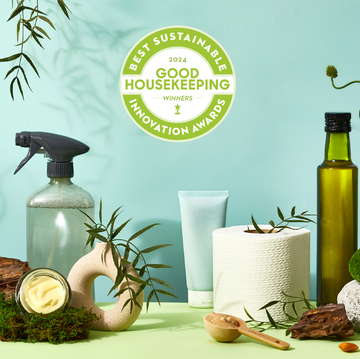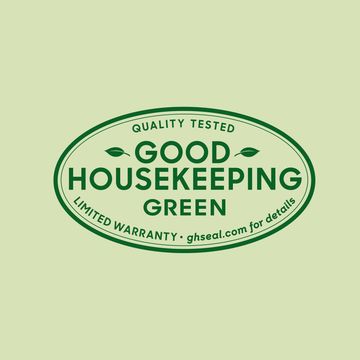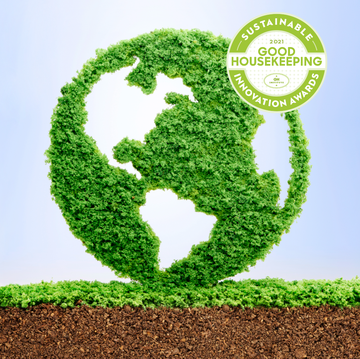With hurricane season in full swing and scenes of widespread devastation of Hurricane Harvey taking over the news, there's no better time to educate yourself should your home be the next one to flood. Here's how to salvage (or toss) everything, from flooring and food to furniture and clothes, after the water recedes.
1. Walk around your home.
After an evacuation, don't let your family rush back into the place. Check for issues like loose or fallen power cables, damaged gas lines and cracks in the foundation or in beams. Next assess your roof. Shingles may need repair. If you have tress nearby, carefully check their stability.
2. Evaluate the indoor scene.
Before you tackle clean up, know that severe damage requires a pro. They have heavy-duty equipment to remove water and the expertise to check for mold. Plus, any issues with walls and floors should be professionally handled. You should be able to manage minor flooding yourself, but don't bother trying to save any items contaminated by raw sewage, oil or other waste — they'll need to be be discarded. Look at the ceiling: If you see water spots, it's an indication of roofing damage.
GH Lab tip: If the power is still out, use a flashlight, not a candle, to see things as open flames can burn items or cause gases to ignite.
3. Start clean-up quickly.
To keep mold at bay, it's important to dry water-logged items (everything from furniture to small knick-knacks) within 48 hours. The longer they remain wet, the more likely mildew stains will appear. Begin by opening windows and using fans and dehumidifiers to keep air circulating.
4. Salvage and clean carpeting.
It's best to send removable carpets and area rugs out for professional cleaning. Unfortunately, installed carpeting (and the padding underneath) that's been immersed in water can't be adequately cleaned and should be thrown away.
If only part of your carpeting got wet, use a wet-dry vacuum to remove as much water as possible. Then, call in professional cleaners, or clean and rinse the carpet with an extraction cleaner (also known as a steam cleaner, like one of these machines we tested in the Good Housekeeping Institute). Use fans to speed up drying.
Depending on the extent of the damage, it may be necessary to pull the carpeting up to thoroughly dry the padding and floor. Plus, you may need to replace the padding to prevent mold. After cleaning and drying, spray with disinfectant spray, like Lysol.
5. Tackle furniture.
Take solid wood furniture outdoors, and remove drawers and doors to clean it (swollen parts may need to dry first, if they can't easily be removed). Thoroughly brush or wash dirty furniture with a well-wrung cloth dipped in a mild soap and water solution. Use a cloth wrung in clear water to rinse. Allow the pieces to dry out of direct sunlight.
Badly damaged furniture may need professional refinishing, but others might just need a new coat of polish. Upholstered furniture should be professionally cleaned, and flood-damaged mattresses should be discarded.
6. Inspect appliances.
For things like coffee makers and toasters, look at cords for fraying or exposed wires. For fridges, ranges and washers, call a service company to check the safety of connections and components. Replace anything that appears to be severely damaged.
7. Open up the fridge.
If you're away from home for more than four hours, toss perishables like meat, dairy and leftovers. It's OK to save condiments. Freezer contents are safe for about 48 hours, if the freezer is full. If only half-full, you've got 24 hours.
GH Lab tip: As soon as you hear a storm is coming, be proactive and freeze milk, meat and poultry.
8. Clean clothing — twice.
For washable fabrics, treat any stains with a prewash spray (we like Shout Advanced Gel) and wash in cool water with a powdered laundry detergent. Powdered detergents work well at removing clay and dirt that floodwater may contain, and cool water keeps stains from setting.
After this initial wash, re-launder everything, this time in the hottest water that's safe for the fabrics with powdered detergent and either chlorine or all-fabric bleach. Air dry all garments until you are certain any stains are removed. Take non-washable garments to the dry cleaner.
9. Beware of carbon monoxide poisoning.
If you're relying on a charcoal grill or camp stove for cooking, don't even think about firing it up indoors. When used in enclosed spaces these types of grills can produce lethal levels of the gas, which is colorless and odorless – but still deadly. Same goes for portable generators.
10. Document the damage.
It may be hard emotionally, but if you want to file an insurance claim, make sure you record all the damage with clear pictures and thorough notes.













